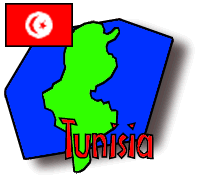Word of the Day: Omma — "community"
Person of the Day: young female participant of the "United Nations Bicycle Ride for All" ![]()
Place of the Day: heavily touristed area between Hammamet and Nabeul
Tech Fact of the Day: Orientation equipment
Group Dispatch, October 26

 ). Bicycles of all sorts and sizes started filling the space between the 16th-century wall of the medina, the pink tourist trains, and the beach.
). Bicycles of all sorts and sizes started filling the space between the 16th-century wall of the medina, the pink tourist trains, and the beach. Questions? Ask andrEa ![]() !
!
Return to Fast Facts
 |
 |
 |
 |
 |
|
Itinerary/ Journal |
Discussions |
About Tunisia |
eDscape Projects |
Scrapbook |
|
|
|
|
|
Copyright 1997-2004 BikeAbout. All rights reserved.
